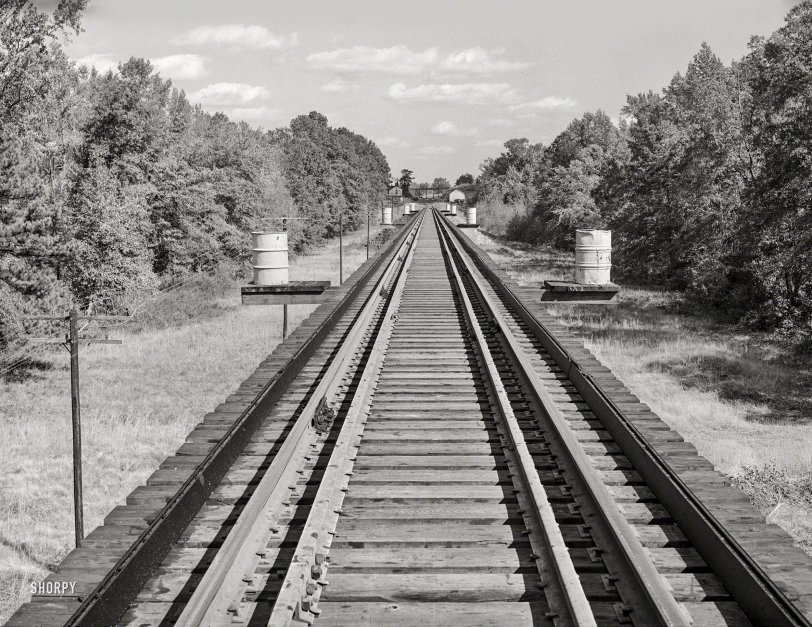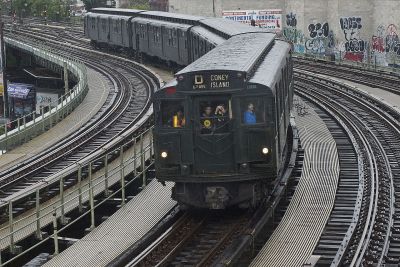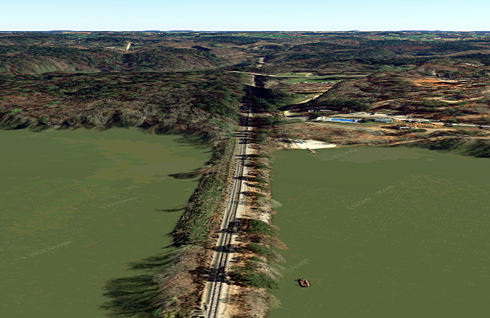


Framed or unframed, desk size to sofa size, printed by us in Arizona and Alabama since 2007. Explore now.
Shorpy is funded by you. Patreon contributors get an ad-free experience.
Learn more.

- Lofty addition
- In 1912
- Keenan Building
- Six years old
- Taken from the P.J. McArdle Roadway?
- It stood only 47 years
- Three track mind
- Incline to the right
- Reach for the sky, 1912 style
- No clean sweep
- Same Job Title, Same Face
- Sadly Lost
- Beautiful ...
- Where you get your kicks
- Aim High
- Pueblo Revival sisters
- Pueblo Neoclassicism
- Milk Man
- Regional dialect.
- Spielberg's inspiration
- Great Photo
- Loaf Story
- Do you still have the Rakes category?
- Could almost be a scene from the 1957 movie 'Hell Drivers'
- The Wages of Fear.
- Conspicuous by their absence
- Got Milk?
- All that aluminum
- No lefties
- Smoke 'em if you've got 'em
Print Emporium
Over the Oconee: 1941

November 1941. "Greene County, Georgia. Railroad tracks across the Oconee River." Medium format negative by Jack Delano. View full size.
Guard rails
I think that the two sets of guard rails serve a slightly different purposes. LarryDoyle is right that the outer set (call 'em "timbers" if you like) is unusual in design and look like they are meant to stop a train from sliding laterally off the bridge.
The inner set serves a different purpose, though. Their main function is to support the weight of a derailed train and to spread that weight out over multiple ties to avoid a structural failure. The wheel flanges on a heavy locomotive or train car are essentially rotating blades, with all of the train's weight on a series of 1" long chisel-shaped curved spines, which could easily chew through a wooden tie, particularly if a series of wheels passes over the same spot as a moving train derails. These guard rails support the axles or whatever part of the truck comes to rest on them, and spreads the weight over the structure so that the ties don't give way and train doesn't fall through the bridge or hit its structural parts.
If the inner rails were truly meant to stop lateral movement, they would (should?) have been affixed to the ties with proper chairs or base plates, and have been closer to the running rails, maybe 1.5" or 2" away. You can see what I mean in the picture below, from https://en.wikipedia.org/wiki/Independent_Subway_System#/media/File:BMT_100_Nostalgia_Ride_(19329819685).jpg. There is a guard rail in the middle of the tracks, and a "keeper rail" close to the inside running rail. The keeper rail pushes back on the wheel flange if the trail starts to derail, and forces the truck back into alignment with the curve. Note how strongly it's affixed to the main rail and the track bed.

Fire causes: embers falling or flying sparks
By the end of the 19th century wooden bridges in Europe and North America were generally replaced by iron constructions. High maintenance costs of the uncovered bridges and several fires due to embers falling or flying sparks from the engine banned wood as a construction material for bridges in the guidelines of several railway companies, restricting it to branch lines only.
Quote from The Influence of the German Railways on the Birth of Modern Timber Engineering
Click here to view a wooden bridge collapsing caused by a fire.
P.S. Many commenters put questions that are already put, or even answered. So my advice: "Read below the lines."
[That's not why all the comments are asking the same question, Alex. Maybe you can figure it out! - Dave]
What Are the Odds?
Like many others, my first speculation at seeing the barrels along the tracks was that it was in case of fire, but why would a train be more prone to catch fire on a bridge, as opposed to solid ground tracks?
[Um, they're worried about the tracks and the bridge catching fire, not the train. - Dave]
Shouldn’t there be water barrels all along railway lines if the danger of fire was so prevalent? Also, just having a bucket to attempt to propel water on the burning locomotive would be an act of futility indeed, given the limited draw of water from the barrels. A man could only draw about a half of a full barrel effectively before the water level became difficult to reach. The collective spitting on the blaze by crew - and passengers, should there be any - might be just as effective. I’m sure other group efforts to extinguish a blaze come to mind, do they not, gentle reader?
Another reader questioned if the railway was elevated. If it isn’t, I bet those knee high telegraph lines to the left afforded a lot of problems of their own: cattle getting tangled up in them; local kids playing on them; you know, typical stuff.
Just Curious
What are the barrels for? Anybody know?
[They're full of peach pits and cigar butts. - Dave]
Water Barrels?
Are the barrels there for water in case the trestle catches fire?
Barreling along the track.
Okay all you railroad buffs, I'll bite.
What are the barrels for? Do they hold sand for rail traction in the winter? For fire in case the trestle catches fire?
Also, why the double sets of rails and what are the outboard uprights for?
Barrels and tracks?
Okay, railroad buffs: What are the barrels for? And I would think that the tracks are set for two directions, two rails and an electric line for each direction, but obviously not in use at the same time... Yes?
Tough on litter?
Why are there so many trash cans?
Barrels
I suppose, from the absence of a lid, those are water (not sand) barrels for fire suppression from stray embers. Inside would be a bucket with a rounded bottom so as to make it useless for households.
Otherwise wooden trestles would be always burning down.
Questions Questions Questions
OK, what gives with the multiplicity of rails, the "sideboards," and all the barrels? Looks like this section of track is elevated, or is that an illusion? Flood plain?
Dual use
That's an interesting configuration. A narrow gauge rail on the same ties as the main line.
A lot going on here
I'm anxiously waiting for an expert to explain what the features are for beyond the track and ties. Are those burn barrels for lights?
Guard Rails
Iv'e never seen a bridge with "guard rails" arranged like this one.
In the middle of each triad of rails are the two running rails, which are really the only rails that you ever really want to use when running a train. The other four rails are for safety in case of a derailment.
The innermost pair of the six rails seen are guard rails, nearly always found on bridges, spaced about 6" from the running rails so that a derailed wheelset would drop into the space between them and be held from rolling sideways and going off the side of the bridge.
The outermost pair of rails are called guard "Timbers" and serve the same purpose as the inner guard rails. Can't have too much safety. The guard timbers are usually just that - timbers bolted to the ties. this is the first time I have ever seen old rails tipped on their side and used as guard timbers. Unusual.
Now Lake Oconee
This appears to be just east of the railroad bridge over the Oconee River with the Carey Station Road crossing in the distance.

The barrels of water
are for a fire, and the inside set of rails so the train does not fall off the bridge on derailment, I've often wondered was ever a bridge saved by those barrels?
























On Shorpy:
Today’s Top 5